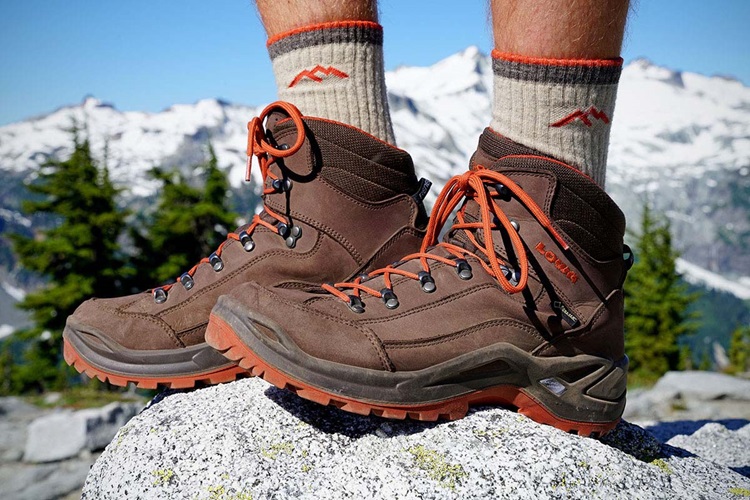Some folks crave the swift thrill of cycling, while others prefer the rhythmic meditation of jogging. In a world full of diverse passions and hobbies, hiking stands out as a bridge between humanity and the natural world. It’s a soulful communion with nature, a chance to uncover hidden vistas, and challenge yourself, one step at a time. But every great hike begins with great preparation. From the right footwear that’ll carry you through bumpy terrains to the essential gear that keeps you safe and comfortable, the right hiking essentials make or break your adventure.
Waterproof Rain Jacket

source: mont.com.au
If you’ve ever been caught in a sudden downpour during a hike, you’ll know the true value of a high-performance and lightweight rain jacket. They’re ideal for those long hikes where you want to keep your load as minimal as possible. And despite their weight, they’re still incredibly effective. They fend off even the heaviest of rain showers without making you feel bulky or cumbersome.
And it’s not just about the weight; it’s also about the freedom of movement they offer. Whether you’re scrambling up rocks or navigating tricky terrain, these rain jackets won’t restrict your mobility. You can hike, climb, and explore with ease, knowing that your clothing protects you without sacrificing comfort.
They’re crafted from high-quality materials that are not only waterproof but also breathable. That means you stay dry from the outside and don’t sweat like you’re in a sauna on the inside. And your lightweight rain jacket isn’t just for hiking; you can use it for camping trips, biking adventures, or even as your everyday raincoat. Plus, it packs up nicely, so you can easily toss one into your backpack without taking up too much space.
Are Rain Jackets Good for Cold?
Most of these jackets primarily keep you dry in wet conditions. They typically don’t have insulation, which means they don’t do much to keep you warm by themselves. In this case, you can make your rainproof jacket work for cold weather by layering effectively. If it’s chilly outside, simply wear some insulating layers underneath it. A warm fleece or a down jacket can trap your body heat and keep you toasty.
Now, some designs do come with an inner lining, or a feature called “pit zips” that allows for ventilation. This helps regulate your body temperature, preventing you from getting too hot and sweaty inside. Just remember that staying dry is still the primary function of these jackets.
Sturdy Footwear

source: switchbacktravel.com
When it comes to hiking, your regular sneakers just won’t cut it. Sturdy hiking boots offer support and protection on unpredictable trails. You’ll encounter sharp rocks, slippery slopes, or uneven ground. These shoes provide the ankle support you need to navigate these challenges safely. They also have proper cushioning and arch support, so you can hike for miles without feeling discomfort or fatigue. No more worrying about blisters or sore feet ruining your adventure.
Comfortable Backpack
Your backpack is your trusty companion on the trail, carrying not just your gear but also your convenience and peace of mind. A well-designed backpack has padded shoulder straps and a breathable back panel, ensuring that you can carry your load without feeling like you’re hauling a ton of bricks. The weight distribution helps minimise the strain on your back and shoulders, so you can hike longer and farther without discomfort.
A good backpack usually comes with multiple compartments, pockets, and even attachment points for gear like trekking poles or water bottles. This means you can neatly organise your essentials, making them easy to access when you need them. No more digging through a chaotic jumble of items.
Navigation Tools
A modern GPS device is your lifeline when it comes to hiking. It helps you figure out where you are and where you need to go. It also helps you retrace your steps and find your way back to safety. Now, some folks rely on smartphone apps for navigation, and those can be handy. But remember, technology can sometimes fail in remote areas with poor reception or limited battery life. That’s why it’s always a good idea to have a backup plan with traditional navigation tools.
Food and Water

source: beyondwildplaces.com
Hiking can be a sweaty business, and you lose a lot of fluids through perspiration. Having a water bottle or hydration reservoir in your backpack ensures you stay well-hydrated, which is not only essential for your comfort but also for your safety. Hiking also burns calories, and you need energy to keep going. Trail mix, energy bars, dried fruits – they’re like little power packs that provide a quick boost of energy when you need it most. Plus, they’re easy to munch on while you walk, keeping your energy levels up.
Multi-Tool
Many unexpected things can happen while you’re on a hike. Maybe your backpack strap snaps, or you need to tighten a loose screw on your gear. That’s when your multi-tool swoops in as the hero of the day. This tool is compact and lightweight, so it won’t weigh you down. But boy, does it pack a punch in terms of functionality. It usually comes with a variety of tools, like a knife, pliers, screwdrivers, and even a bottle opener. Maybe you want to open a can of beans for a trailside meal, or you need to adjust a piece of gear on the fly. Your multi-tool makes these tasks a breeze and ensures you can keep going without a hitch.

